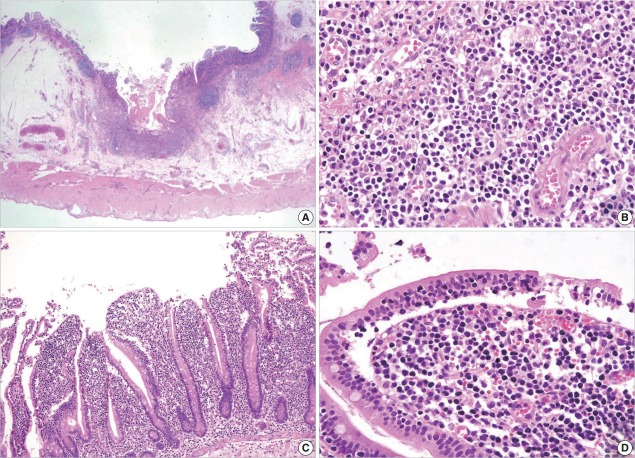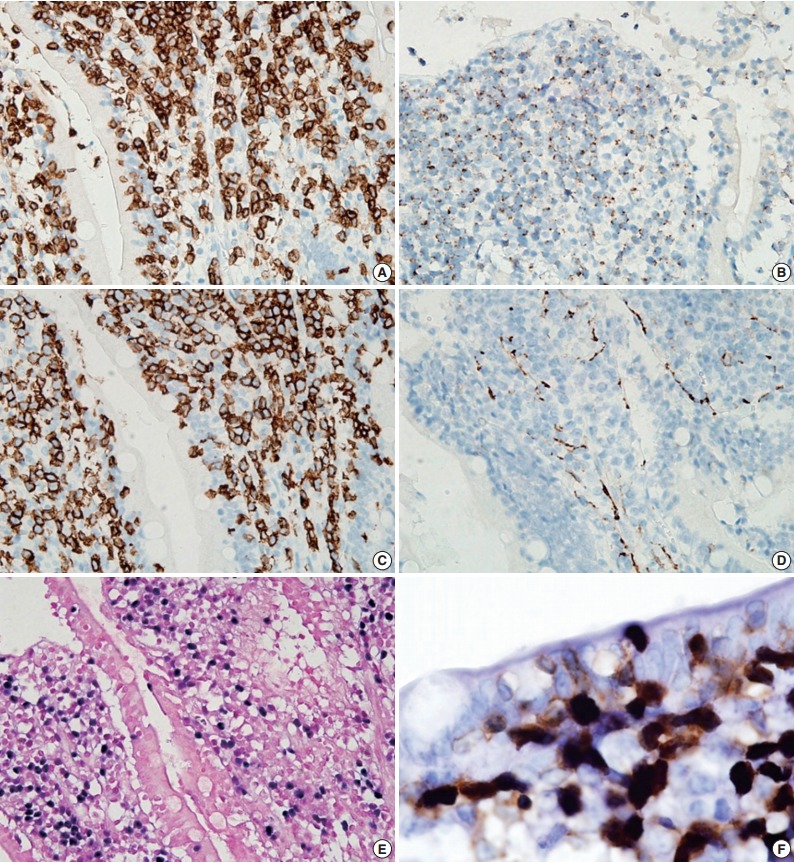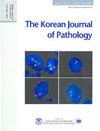A Case of Type II Enteropathy-Associated T-Cell Lymphoma with Epstein-Barr Virus Positivity.
Korean Journal of Pathology
Pub Date : 2014-12-01
Epub Date: 2014-12-31
DOI:10.4132/KoreanJPathol.2014.48.6.426
引用次数: 6
Abstract
Enteropathy-associated T-cell lymphoma (EATL) is defined as an intestinal lymphoma of intraepithelial T lymphocytes. EATL is further classified into two distinct types: type I (classical) EATL, which comprises 80%–90% of all cases; and type II EATL, a monomorphic variant of the disease. Type I EATL occurs at a higher frequency in northern Europe, where celiac disease is more common, and is characterized by the presence of large tumor cells with a CD3+CD4–CD8–CD56– immunophonotype [1]. Conversely, type II EATL, originally described as CD56+ intestinal lymphoma, consists of monomorphic small- to medium-sized tumor cells, typically with a CD3+CD4–CD8+CD56+ immunophenotype, with weak or no association with celiac disease [1,2]. Recently, a number of reports have defined type II EATL as a distinct T-cell neoplasm predominant in patients of Asian ethnicity with no history of enteropathy or Epstein-Barr virus (EBV) association. In addition, type II EATL is characterized by frequent expression of gamma-delta T-cell receptors (γδ TCR). EBV-positive cases were suggested to represent extranodal natural killer (NK)/T-cell lymphoma rather than type II EATL. Whether EBV-positive cases with similar morphology and phenotype should be included in the definition of EATL and whether a proportion of these cases are γδ T-cell lymphomas remain debatable. Herein, we report a case of T-cell lymphoma of the jejunum with a CD3+CD4–CD8+CD56–betaF1+ phenotype, rearranged γ TCR genes, and diffuse EBV-encoded RNA (EBER) positivity.



II型肠病相关t细胞淋巴瘤伴eb病毒阳性1例。
本文章由计算机程序翻译,如有差异,请以英文原文为准。
求助全文
约1分钟内获得全文
求助全文

 求助内容:
求助内容: 应助结果提醒方式:
应助结果提醒方式:


